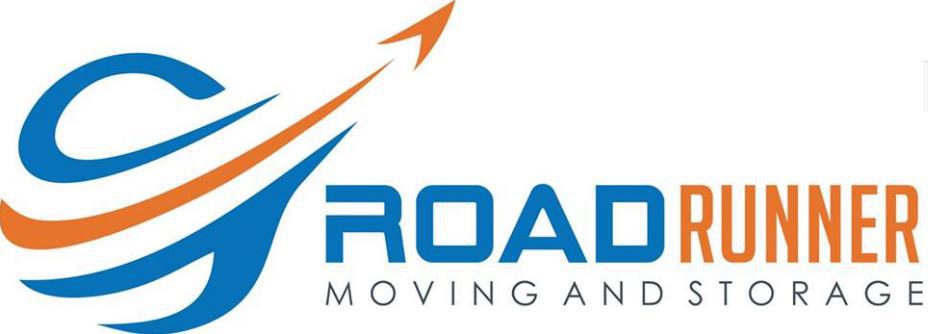Florida Movers Top Rated
(888) 787-7813862 Movers in Florida
Page 1/58
Find Professional Florida Moving Companies In a Snap
The ultimate way to find the best Florida moving companies is to read interstate Florida moving reviews. Moving within Florida means that you not only have access to local moving company
Outsmart the Con Artists: How to Identify ROGUE MOVERS
- Moving
companies in Florida should have an arbitrator, who is a person on staff that can settle any kind of dispute that may arise between customer and company. If your moving company doesn't have one, move to the next company on your list. - The Federal Motor Carrier Safety Administration and the United States Department of Transportation regulate the moving industry and vet moving companies. If your company isn't licensed by these government agencies, they are not a legitimate company.
- Make sure to read the reviews left by previous clients about the company's performance. If the reviews are unsavory, this should be a red flag.
- Comb over the contract with a fine-tooth comb, so to speak. Have your movers explain everything in detail so that you understand each line item charge. If they refuse to explain, you should refuse to sign.
- Only pay money for the best movers in Florida.
Going Far? YOU’LL NEED THIS GUIDE FOR CROSS-COUNTRY MOVING
- Get planning early. The key to an awesome move is mostly how early and how thoroughly you begin to make a game plan for everything related to your move. When is the best time to start planning? As soon as you know you’re moving. Don’t put this off! Florida moving services don't get any cheaper, so it's best not to wait.
- Create an inventory. This is essential to understand not just what you will
taking andtracking during the move, but it really puts into perspective how much stuff you have and what you can bear to get rid of to streamline your move. - Do homework. Schedule time to do research about the options for long-distance movers listed here on Moving Authority. Also, take a look at the logistics and usual practices of a cross-country move so that you can be more educated about how the process works. Check out moving companies Florida to see how much you'll need to budget for your move.
- Plane or car? Depending on a few different factors (distance, kids,
health of your vehicle, etc), it may be less of a hassle to fly to your destination rather than take a road trip. Look into car movers Florida to transport your car. - Rest and relaxation. Kicking back and relaxing for a bit may seem like the last thing you should do when you’re faced with such a monumental task, but taking time for yourself really is an important piece of the puzzle. If you’re a frazzled mess, you won’t be able to have a successful move, period. When you’re making your moving schedule, be sure to place room for some “you time.”
- Take all your valuables with you on your person. This includes expensive items like jewelry, as well as invaluable items like important documents. It’s not that moving companies in FL can’t be trusted, but you don’t want these items to be
but in jeopardy of any accidents that may happen. - Don’t skimp on your packing materials. You’re going to want sturdy boxes with durable tape, as well as
soft material inside like tissue paper or cardboard inserts. Not getting the proper packing materials can mean the difference between everything arriving in one piece and opening up your boxes to find your stuff broken, so be sure to find moving boxes and other materials that will go the distance. - Finalize it all. A couple of weeks before
tour move, be sure to call the movers in Florida you’ve hired to make sure that your move is on ready, set, go mode.
Little-Known Ways to Find FLORIDA MOVING AND STORAGE
- More often than not, customers see enticing deals for moving services in ads or online and find that the price listed is not exactly what it seems.
- A moving company in Florida will usually run advertisements with off-season prices in big, bold fonts in order to draw attention to their services.
- Most moves happen in the summer months between May and August, and even then, it’s most common for people to move on the weekends rather than take time off in the workweek.
- The key to being able to utilize these low costs is being flexible with your move. If you can plan to take that discounted rate that just so happens to fall on a Wednesday in the off-season, it’s pretty financially lucrative for you to do so.
- By taking the off-season time slots, you can save a notable amount of money. This is even
more true if you’re moving long-distance and require lots of additional moving services.
The Budget-Friendly Guide to Scoring Free Moving Boxes
- Ask your grocer. Heavy fruits like apples,
oranges and grapefruits come shipped to the store in durable cardboard boxes. - Check the liquor store. Alcohol is kept intact during transport in those boxes; who’s to say your breakables won’t, as well?
- Office spaces. Printer paper is shipped in sturdy boxes that have lids and handles, which are awesome for your household goods.
- What’s the best way to get these boxes for free? Smile and ask politely. You're already paying for moving services Florida. Don't pay for boxes as well!
Movers By City in Florida
Do you know?

- A moving company, removalist, or van line are all companies that help people as well as other businesses to move their goods from one place to another. With many inclusive services for relocation like packing, loading, moving, unloading, unpacking and arranging of items can all be taken care of for you. Some services may include cleaning the place and have warehousing facilities.
- According to the U.S. Census Bureau, 40 million United States citizens have moved annually over the last decade. Of those people who have moved in the United States, 84.5% of them have moved within their own state, 12.5% have moved to another state, and 2.3% have moved to another country.
- In the United States and Canada, the cost for long-distance moves is generally determined by a few factors. The first is the weight of the items to be moved and the distance it will go. Cost is also based on how quickly the items are to be moved, as well as the time of the year or month which the move occurs. In the United Kingdom and Australia, it's quite different. They base price on the volume of the items as opposed to their weight. Keep in mind some movers may offer flat rate pricing.
- Many people are familiar with this type of moving, using truck rental services, or borrowing similar hardware, is known as DIY moving. Whoever is renting a truck or trailer large enough to carry their household goods may obtain moving equipment if necessary. Equipment may be items such as dollies, furniture pads, and cargo belts to protect furniture and to ease the moving process.
- As most people have experienced, moving does involve having the appropriate materials. Some materials you might find at home or may be more resourceful to save money while others may choose to pay for everything. Either way materials such as boxes, paper, tape, and bubble wrap with which to pack box-able and/or protect fragile household goods. It is also used to consolidate the carrying and stacking on moving day. Self-service moving companies offer another viable option. It involves the person moving buying a space on one or more trailers or shipping containers. These containers are then professionally driven to the new location.
- There many reasons for moving, each one with a unique and specific reason as to why. Relocation services, employee relocation, or workforce mobility can create a range of processes. This process of transferring employees, their families, and/or entire departments of a business to a new location can be difficult. Like some types of employee benefits, these matters are dealt with by human resources specialists within a corporation.















